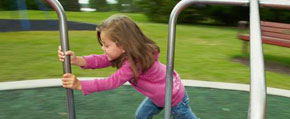We are pleased to announce an exciting new alliance between Active Living Research and GP RED to co-host and coordinate...
Sustaining Active-Living Communities Over the Decades: Lessons from a 1930s Greenbelt Town
Ahrentzen, S. (2008). Sustaining Active-Living Communities Over the Decades: Lessons from a 1930s Greenbelt Town. Journal of Health Politics, Policy and Law, 33(3), 429-453.
Greendale, Wisconsin, was intentionally created with many of the design and planning principles that active-living advocates promote today. This case study examines the processes behind sustaining these particular planning and design principles over time in light of economic and regional challenges that have faced not just Greendale but most town centers over the last fifty years. Despite these challenges, the walkable nature of Greendale's center remains strong today, in terms of both activity and community identity. While many circumstances are specific to this particular town, useful lessons can be drawn for those new urbanist (NU) communities being developed in greenfields and suburbs today, many of which are strikingly similar to Greendale - relatively small, low density, and located within metropolitan areas. Greendale's success resulted from (1) attending to the retail/commercial product mix; (2) attracting nonresidents to use the community's retail and public space; and (3) capitalizing on community investment not simply from residents' organizing efforts but, more important in this case, from corporate community involvement by a Greendale business firm whose interests and values coincided with those of the community.
Related Tools & Resources
STAY UP TO DATE
RECENTLY ADDED TOOLS & RESOURCES
MOVE! A BLOG ABOUT ACTIVE LIVING
The "Active Living Conference" aims to break down research and practice silos and...







